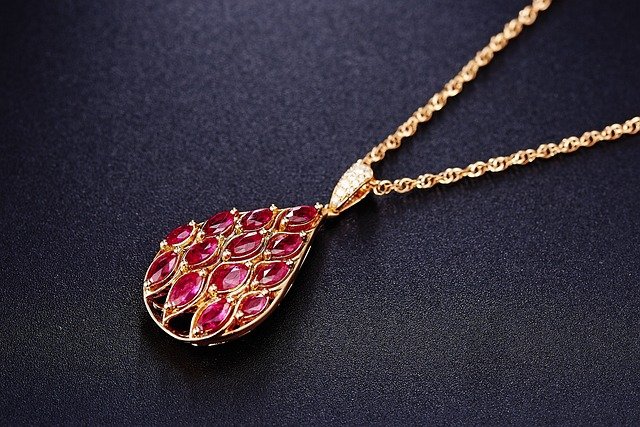How Pendants Are Made and Worn
Pendants are small pieces of jewelry that hang from chains or cords. This article explains the different styles, materials, and ways people use pendants. Learn how pendants are designed, how they can match outfits, and how they have been part of personal adornment for many years.

The Craftsmanship Behind Pendant Jewelry
Creating pendant jewelry begins with design conceptualization, where artisans sketch ideas and plan proportions. The manufacturing process varies significantly depending on the materials used and the complexity of the design. Traditional metalworking techniques include casting, where molten metal is poured into molds, and fabrication, where pieces are constructed from sheet metal and wire. Modern pendant makers also utilize computer-aided design and 3D printing technologies to create precise prototypes before final production. The choice of base metal, whether sterling silver, gold, or platinum, determines both the pendant’s durability and its finishing techniques.
Gold Pendant Creation and Characteristics
Gold pendant production requires specialized knowledge of alloy compositions and working temperatures. Pure gold is typically mixed with other metals like copper, silver, or palladium to create different karat weights, with 14k and 18k being popular choices for pendant jewelry. The manufacturing process involves careful temperature control during melting and shaping, as gold’s malleability makes it both easy to work with and prone to damage if handled improperly. Finishing techniques for gold pendants include polishing, brushing, and texturing to achieve desired surface effects. Many gold pendants feature hollow construction to reduce weight and cost while maintaining visual impact.
Silver Pendant Manufacturing Methods
Silver pendant creation often begins with sterling silver, an alloy containing 92.5% pure silver mixed with copper for strength. The manufacturing process typically involves either casting liquid silver into detailed molds or hand-fabricating pieces using traditional silversmithing techniques. Silver’s relatively low melting point makes it accessible for smaller jewelry workshops, though it requires specific skills to prevent oxidation during heating. Surface treatments for silver pendants include oxidation for antique effects, rhodium plating for tarnish resistance, and various texturing techniques. The softness of silver makes it ideal for detailed engraving and embossing work.
Diamond Pendant Assembly and Setting Techniques
Diamond pendant construction requires precision and expertise in gemstone setting. The process begins with creating a secure metal framework that will hold the diamonds while showcasing their brilliance. Common setting styles include prong settings, which use small metal claws to hold stones, and bezel settings, which surround diamonds with metal edges. Channel and pavé settings allow multiple smaller diamonds to be incorporated into pendant designs. The mounting process requires specialized tools and techniques to ensure diamonds remain secure while allowing maximum light transmission. Quality control measures include checking prong integrity and ensuring proper stone alignment.
Wearing Styles for Necklace with Pendant Combinations
A necklace with pendant offers numerous styling possibilities depending on chain length, pendant size, and personal preference. Standard chain lengths range from 16 inches for choker-style wear to 36 inches for dramatic long pendant displays. Layering multiple necklaces with different pendant styles creates contemporary looks, while single statement pendants work well for formal occasions. The pendant’s weight must be balanced with appropriate chain thickness to prevent damage and ensure comfortable wear. Consider neckline compatibility when choosing pendant lengths, as different clothing styles complement various chain and pendant combinations.
Pendant Pricing and Market Options
| Pendant Type | Price Range | Key Features |
|---|---|---|
| Sterling Silver | $25-$200 | Affordable, versatile, requires maintenance |
| 14k Gold | $150-$800 | Durable, hypoallergenic, good value |
| 18k Gold | $300-$1,500 | Higher purity, luxury appeal, softer metal |
| Diamond Accent | $200-$2,000 | Sparkle factor, varies by diamond quality |
| Designer Pieces | $500-$5,000+ | Brand recognition, unique designs, premium materials |
Prices, rates, or cost estimates mentioned in this article are based on the latest available information but may change over time. Independent research is advised before making financial decisions.
Care and Maintenance Considerations
Proper pendant care extends the life and appearance of jewelry pieces regardless of their material composition. Gold pendants require minimal maintenance but benefit from gentle cleaning with mild soap solutions and soft brushes. Silver pendants need regular polishing to prevent tarnish buildup, with proper storage in anti-tarnish pouches or cloths. Diamond pendants should be professionally cleaned periodically to maintain their brilliance, as oils and debris can accumulate around settings. General care practices include removing pendants before swimming, exercising, or applying cosmetics, and storing pieces individually to prevent scratching.
Understanding both the creation process and proper wearing techniques for pendant jewelry enhances appreciation for these miniature works of art. Whether choosing a simple silver charm or an elaborate diamond creation, knowledge of craftsmanship methods and styling options ensures informed decisions and proper care. The versatility of pendant jewelry continues to make it a staple in personal collections, offering endless opportunities for self-expression through carefully chosen pieces that reflect individual style and preferences.




